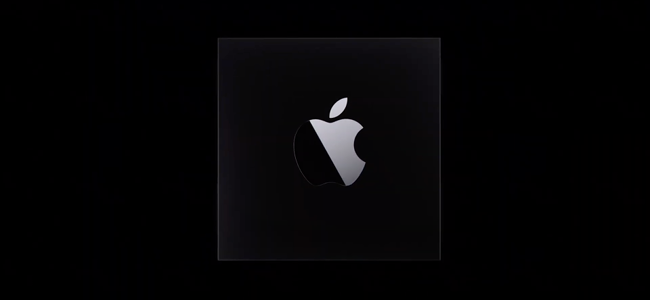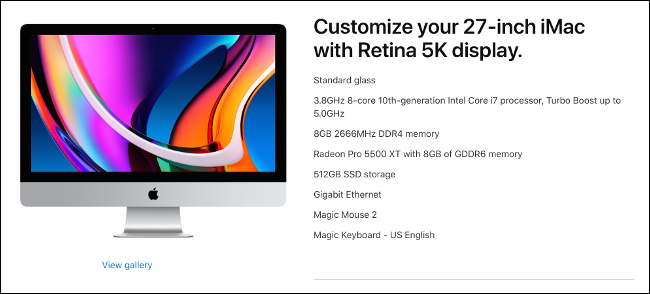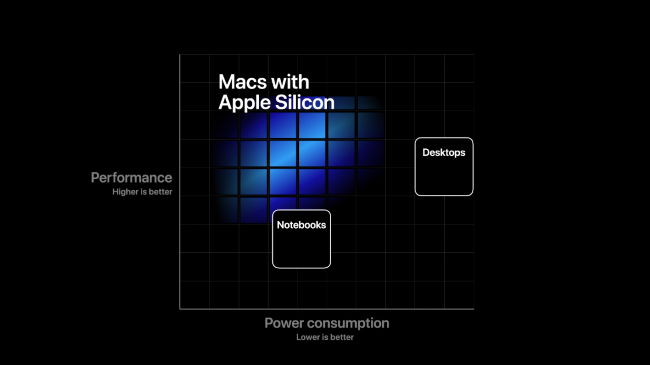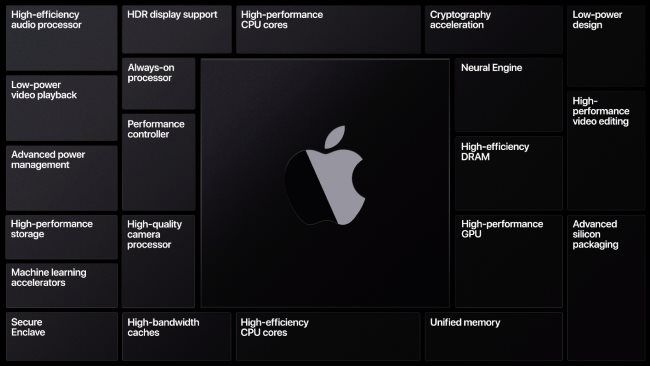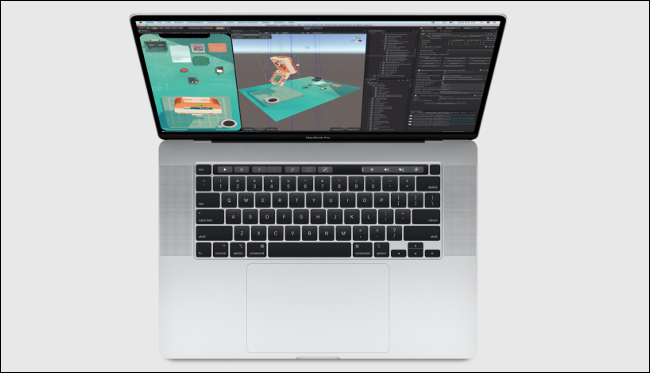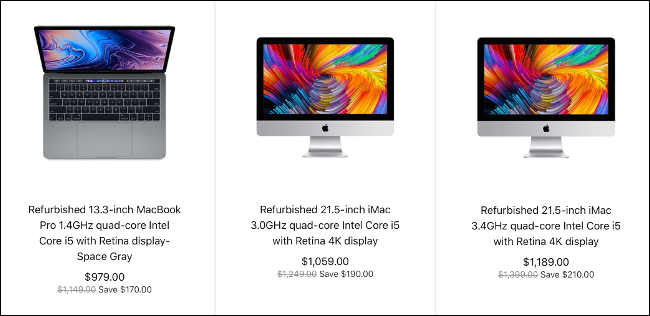Quick Links
The winds of change are blowing at Apple. The company announced that it intends to fully transition the entire Mac line to custom ARM-based Apple Silicon processors within two years.
Apple also just refreshed the 27-inch iMac with Intel's latest 10th generation Core i5 and i7 processors. So, should you buy a new Mac now, or wait for ARM?
The Case for Buying an Intel Mac in 2020
There are some good reasons to buy an Intel Mac in 2020, even though a whole new architecture is just around the corner. At the top of the list is the fact that you need a new Mac, right now. Maybe your computer was destroyed, stolen, or is simply beyond repair.
As many of us rely on a Mac for work, school, or creative endeavors, waiting for Apple's upcoming ARM models isn't an option. As of August 2020, Apple hasn't announced what the first ARM Mac models will be. Rumors suggest a MacBook Air, and a redesigned iMac and MacBook Pro are all in the works.
The Intel chips Apple currently ships use 64-bit Intel architecture, which handles compute instructions differently than the upcoming ARM-based chips. This means software written for Intel Macs won't natively run on ARM.
Apple has promised some degree of compatibility thanks to the Rosetta project, but it's unlikely applications written for Intel Macs will perform as well on ARM.
This is something to keep in mind if you want to squeeze as much performance out of an Intel-native application as possible. For example, if you're a music producer who uses a niche audio workstation app, the software you depend on might not be ARM-ready at launch. No one knows yet how good (or bad) Rosetta will be at converting Intel-native apps to work on ARM processors.
One of the biggest benefits of Intel-based Macs is the ability to dual-boot Windows. While Windows 10 for ARM exists, there are many problems with it, including a limited app selection. If you dual-boot Windows to run native X86-64 apps (as many Mac gamers do), you'll probably want to jump on this last generation of Intel Macs.
The arrival of Microsoft's Surface Pro X has reignited the conversation surrounding Windows on ARM. There's also a distinction to be made between Windows 10 on ARM and the ill-fated Windows RT. The biggest drawback right now is the X86 apps run in a 32-bit emulator, which means 64-bit apps aren't supported. That's a lot of Windows software that won't run on Windows.
The Potential Benefits of Waiting for ARM
Apple hasn't revealed too much about Apple Silicon, or how it will affect the Mac ecosystem, but we have a good understanding of the potential benefits of ARM. While this is the first time the company has designed custom processors for Macs, it's used its own system on chip (SoC) in the iPhone and iPad for years.
Since ARM uses a simplified instruction set than that of the X86-64, it's the architecture of choice for low-power devices. ARM-based chips are more power-efficient than their Intel counterparts, which could lead to big gains in battery life.
However, Apple's ARM chips aren't directly comparable to mobile SoCs. The company could go in the opposite direction and focus on performance, trading battery gain for more power. This will be the case for desktops, like the iMac and Mac mini.
It's highly unlikely Apple would release an ARM-based Mac that is significantly less powerful than an Intel predecessor. However, we just won't know how the two stack up until one arrives.
Then, there's the matter of cost. Apple's been at the mercy of Intel for over a decade, paying whatever the company charges for its chips (bulk discounts aside). Apple will likely save money by severing ties with a third-party and using its own products.
Of course, even if Apple saves money on manufacturing, those savings might not be passed down to the customer in the form of cheaper Macs. Apple likely has significant investments in R&D to recover, and those expenses will continue as the company looks beyond the ARM transition.
There are additional benefits to ARM, though. Apple announced that iOS and iPadOS apps designed for iPhone and iPad will run natively on ARM-powered computers. They'll also do so with little-to-no action required from developers. This will massively increase the number of apps available for the platform. Of course, many of them will need to be optimized for the desktop to be truly useful.
Even if you do pull the trigger on a new ARM MacBook, you'll still be able to use X86-64 applications thanks to Rosetta. It's unlikely these apps will run quite as well as they do on an Intel Mac, but we'll have to wait and see.
The Many Unknowns of Apple Silicon
Rosetta effectively recompiles X86-64 when you install them to create ARM versions that can run on the new architecture. The only ARM Mac available right now is a Mac mini with an old A12Z iPad SoC. Some developers have been able to use it to ensure their software is ARM-ready. This is a development kit, so it isn't representative of the final product. It's also running beta software.
The benchmarks we've seen coming from these machines are promising, with the benchmark tool (Geekbench) requiring the use of Rosetta to run in the first place. Even with this handicap, the A12Z-powered Mac still outperformed the Surface Pro X running a native ARM version of Geekbench.
It's always wise to approach first-generation hardware with caution, though. Apple has some experience in this thanks to its iOS endeavors, but it's still a brave new world for the Mac. The company has had issues with thermal throttling in the MacBook Pro as recently as 2019, and it's finally replacing the unpopular butterfly keyboards in the latest models.
The first Retina MacBook Pro was plagued with display issues, and the original Apple Watch required a complete rethink due to the sluggish way its software "streamed" from iPhone.
The company is a serial innovator, but that also means Apple makes some missteps as it finds its way. If you aren't desperate to upgrade right now, waiting even a year for the next generation of Apple Silicon could be worth it.
Then, of course, there are all the other unknowns that come with a hardware refresh. Will a redesigned ARM-powered iMac still allow for expandable RAM? What about USB-A ports? Will Apple kill the headphone jack on the Mac lineup? And what does an ARM-powered Mac Pro look like?
If you buy a Mac today, you know what you're getting. We don't know how long Apple will continue churning out Intel-powered machines---especially after it releases ARM versions.
Do You Need a Mac Today?
If you need a Mac right now, buy one. It'll be supported for years. When Apple transitioned from PowerPC to Intel, it introduced Rosetta in 2005 to allow PowerPC applications to run on Intel machines. Rosetta wasn't dropped from the OS until 2011.
Moving forward, Apple's software development environment Xcode will allow developers to create universal binaries that run natively on both Intel and Apple Silicon machines.
You don't have to buy a brand-new Mac either. If you'd rather save some money, opt for a second-hand machine or buy a refurbished one directly from Apple with a like-new warranty. It's probably best to avoid the old "butterfly" keyboards if you can, though.
If you primarily use an iMac or Mac mini, you could pick up a MacBook Air or a lower-spec MacBook Pro that would still be useful after you upgrade your main machine to ARM. For example, we're writing this article on a mid-2012 MacBook Pro, running the latest version of macOS Catalina.
Whatever you choose, you can be sure Apple will continue to provide software updates for your machine for years.

